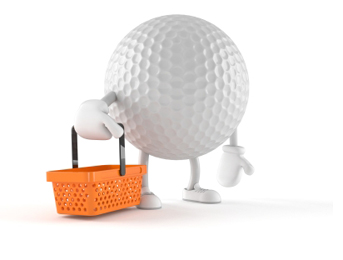Some Things to Consider When You’re Buying a Putter
Your putter is the most “personal” club in your bag. Buying a putter can be tricky because so many things are involved in finding the right “fit” and so many choices are out there. Here are some things to consider – hopefully, knowing what they are will make the process a little less daunting. So will reading through some of the putter reviews we’ve posted on our site.
It’s easy to make the wrong choice when you’re buying a putter. For one thing, there are hundreds of different choices. And it’s easy to get caught up in a mindset that can be deadly – you might think that the most expensive putter or the one that a lot of your buddies are playing must be the best choice, but that’s not necessarily true.

Golf is a game of skill, not a matter of “keeping up with the Joneses.” You can help your putting skills by buying the right putter. So, the first thing to keep in mind is your goal: choosing the putter that’s best for you. That won’t necessarily be the most popular or most expensive putter, or even the putter that your favorite pro plays. Instead, when you’re buying a putter it’s important to choose the one that suits you best.
To achieve your goal, you’ll need to evaluate various factors: price; type; head shape; face insert (or not); alignment aid(s); and shaft offset/hosel. Let’s take them in that order.
- Price. Putters vary wildly in price, from as little as $50 to over $300. As I mentioned above, the most expensive putter isn’t necessarily the one that’s right for you (although it might be). Just keep in mind that you don’t need to pay a ton of money to find a good putter. That means you shouldn’t be reluctant to try putters in different price ranges. Feel and consistency are what you’re looking for. A putter that feels right and puts a consistent roll on the ball will boost your confidence and improve your putting, no matter how cheap or expensive the putter is.
- Type. Traditional length, belly length or even longer? Most people use traditional-length putters (the standard is 35”, although 34” and even 33” are fairly common), but using a belly or chest putter can help people whose putting stroke has too much wrist action. Belly and longer putters can, however, be short on “feel” and make distance control a problem. Try several putters of each length and identify which type you’re most comfortable with.
- Head Shape. Blade putters are fairly compact and have top lines that are much narrower than mallet putters. They’re also more difficult to control than mallets, at least for me. In addition to being larger than blades, mallet putters vary widely in their shapes and usually have some built-in weighting and other features to increase their Moment of Inertia and promote smooth putting strokes. Again, try several putters of both types and find the one that feels best and gives you the most consistent roll.
- Face Insert. Some golfers prefer using a putter without a face insert, while others like the feel and feedback inserts can deliver. Inserts can be made of different materials, and each material provides a different feel. Try some putters with milled steel faces (no insert) and then try some with different types of face inserts. You’ll probably be able to tell which type you prefer.
- Alignment Aid(s). As golfers, we all realize the importance of lining up the putter properly. Many putters use some sort of alignment aid(s) to help players line up the putter face correctly. Some of these alignment aids are very discreet while others are so obvious they’re impossible to miss. And although putter manufacturers try to make their alignment aids as helpful as possible, some designs work better for some golfers than for others. When you’re buying a putter, make sure you get one that has an alignment system you find helpful.
- Shaft Offset/Hosel. Several different shaft offsets and hosel styles are possible with putters. When you’re buying a putter, you may see some with a “plumber’s neck hosel,” “S-neck hosel,” “flare-neck hosel,” “center shaft,” “half-shaft offset,” or “full shaft offset.” Try different types to see which one seems to work best with your putting stroke. The right shaft offset/hosel style can help you keep your eyes over the ball properly. It can also help keep your hands slightly ahead of the ball, which can increase your putting accuracy.
Buying a putter is a complicated decision and it’s easy to make the wrong choice, but there’s no reason to feel overwhelmed. When you’re buying a putter, the information above can help you find the right one. We also invite you to read through the putter reviews we’ve posted on our website.
From "buying a putter" to putter reviews.



New! Comments
Have your say about what you just read! Leave us a comment in the box below.